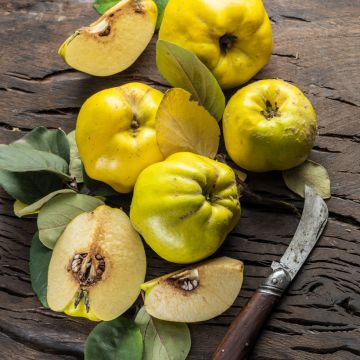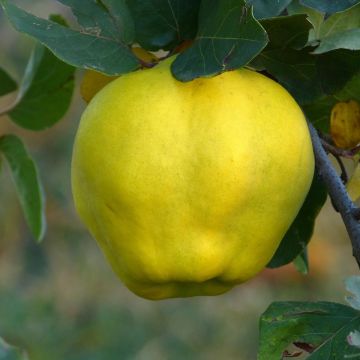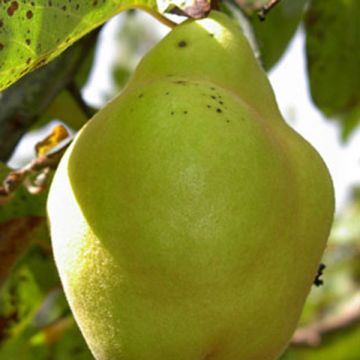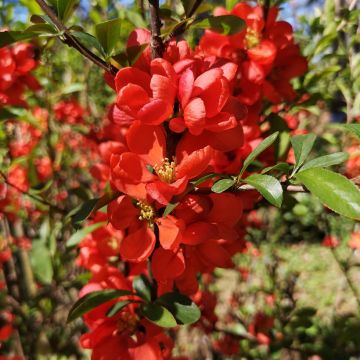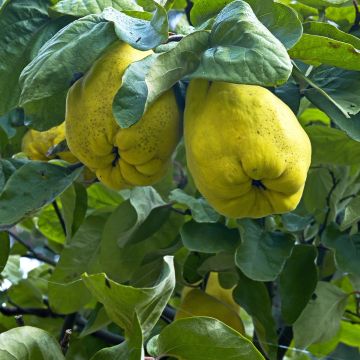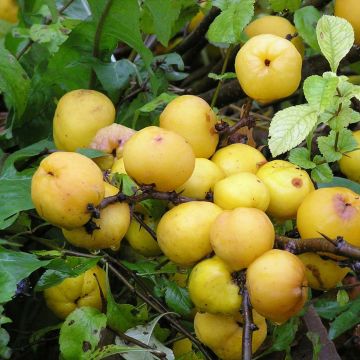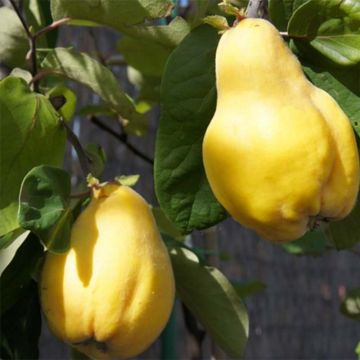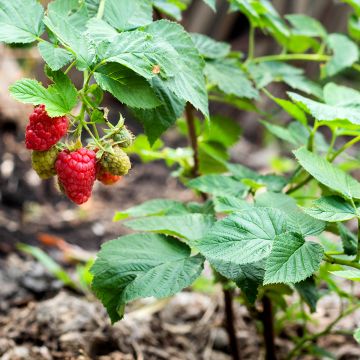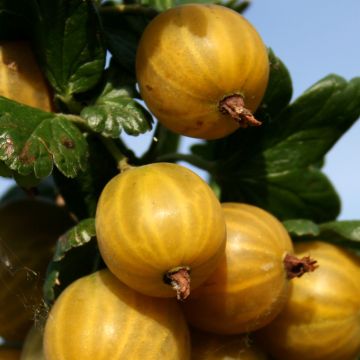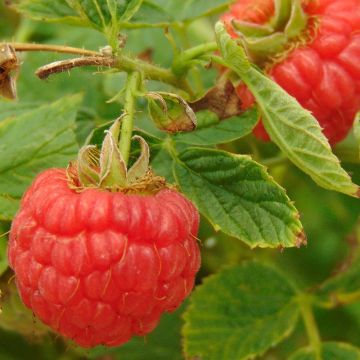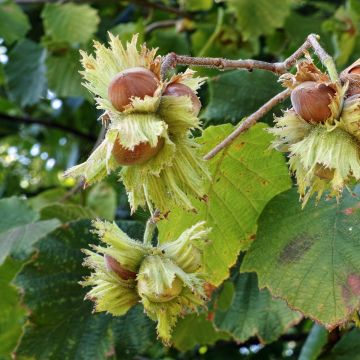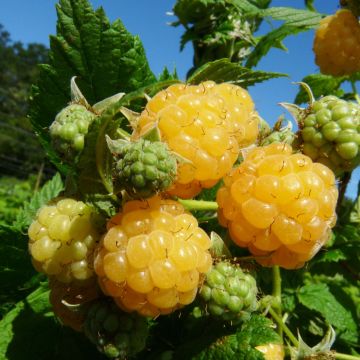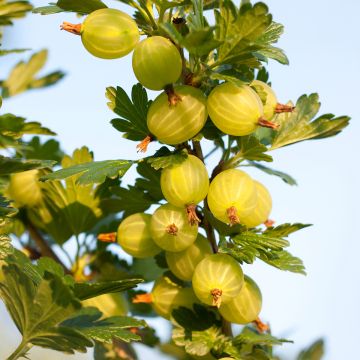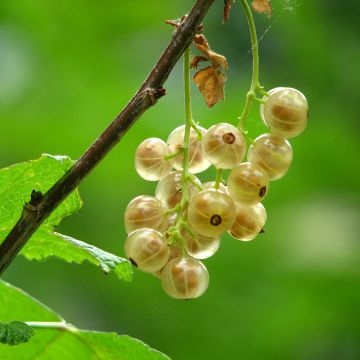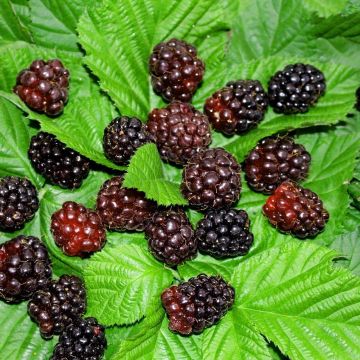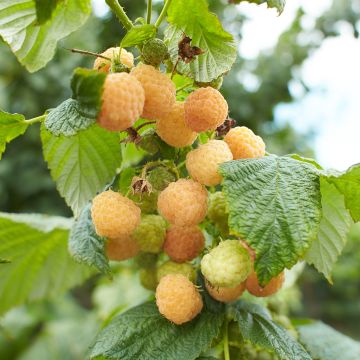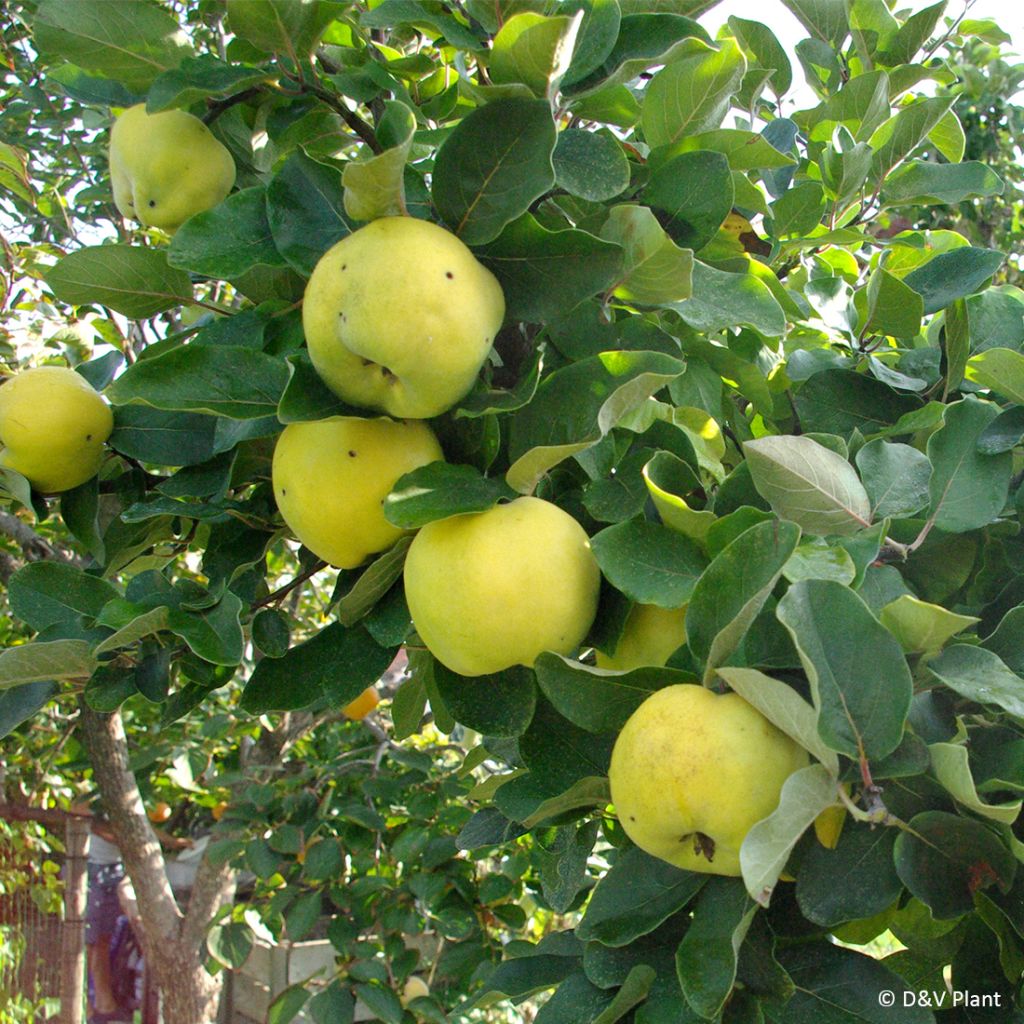

Cognassier commun - Cydonia oblonga Leskovacz
Common Quince Leskovac- Cydonia oblonga
Cydonia oblonga Leskovacz
Quince
This item cannot be shipped to the selected country
Oversize package delivery charge from €6.90
More information
Schedule delivery date,
and select date in basket
This plant carries a 6 months recovery warranty
More information
We guarantee the quality of our plants for a full growing cycle, and will replace at our expense any plant that fails to recover under normal climatic and planting conditions.
Oversize package: home delivery by special carrier from €6.90 per order..
Express home delivery from €8.90.
Description
The Common Quince 'Leskovac' (synonym Lescovacka) is a very cold-resistant variety, immune to scab, with fruits that can weigh over 1.5kg. Quinces ripen in October-November, they are rounded and bosselated in pear shape, yellow-green in colour, covered with a light velvety film. Their highly fragrant flesh is firm and sweet. Astringent when raw, quince flesh reveals its flavour and aroma when cooked. It is delicious in compotes with apples, in jams, jellies, fruit pastes, in pies and crumbles, but also in sweet/savoury dishes. The tree is bushy, with small leaves. Its massive spring flowering, white-pink in colour, is an additional asset. It is a non-self-fertile variety: plant a 'Champion' quince nearby to promote pollination.
The common quince, in Latin Cydonia oblonga, belongs to the Rosaceae family, just like the apple tree and the pear tree. This shrub is native to temperate regions of the Caucasus and Iran, from the Caspian Sea to the Black Sea: Iran, Armenia, Azerbaijan, Turkey, Caucasian Russia, Turkmenistan. It has naturalized in France, mainly in the Midi region. It is a small deciduous and hardy tree, with a spreading habit and a rounded crown, whose foliage falls in autumn. The cultivar 'Leskovac' was selected in former Yugoslavia. This variety is not fully self-fertile, fruit production will be satisfactory in the presence of another quince tree that blooms simultaneously. Production is good and regular in most regions.
The 'Leskovac' quince has a spreading habit, it develops multiple trunks and reaches an average height of 4.50m (15ft) with a width of 2.50m (8ft), depending on growing conditions. Its leaves are trailing, entire, measuring 6-7cm (2-3in) long, with a hairy edge. Their colour is medium green. Flowering occurs in April-May, it is mid-late and appears roughly at the same time as that of the 'Champion' quince. The flowers have 5 petals, white-pink in colour, and measure about 4cm (2in) in width. After pollination, the fruits form and reach maturity from October 15 onwards, depending on the regions. Quinces have an irregular and rounded pear shape, sometimes slightly heterogeneous in terms of size, each weighing from 200g up to 1.5kg. When immature, they are green and covered with a fuzzy down. They lose much of this down before the end of autumn when the fruit changes colour and turns yellow. They are very hard fruits, with thick skin, containing firm flesh of pale yellow to whitish color, sweet and pleasantly fragrant. The fruit core contains brown seeds.
Easy to grow, the 'Leskovac' quince likes sunny locations, rich soils, deep, without excess limestone. Truly hardy, it can thrive in all regions, but needs warmth in autumn for good fruit ripening. Since quinces affect the ripening of other pome fruits, it is advisable not to store them together. The main pests of the quince are aphids and codling moths, and the main diseases are entomosporiosis and brown rot (storage diseases).
Report an error about the product description
Plant habit
Fruit
Flowering
Foliage
Botanical data
Cydonia
oblonga
Leskovacz
Rosaceae
Quince
Cultivar or hybrid
Other Quince trees
Planting and care
Easy to maintain, the 'Leskovac' Quince does not require much pruning, a light pruning of the tips at the end of fruiting every 4-5 years will be necessary to maintain balanced branches. Every winter, give it a small handful of wood ash, rich in potash, this will improve fruiting. It can be planted in autumn or early winter, outside the freezing period. This fruit tree grows in any deep, loose soil, without excessive limestone and not too dry. A long and hot summer is necessary for proper fruit ripening.
Planting period
Intended location
Care
This item has not been reviewed yet - be the first to leave a review about it.
Easy-grow fruit trees
Haven't found what you were looking for?
Hardiness is the lowest winter temperature a plant can endure without suffering serious damage or even dying. However, hardiness is affected by location (a sheltered area, such as a patio), protection (winter cover) and soil type (hardiness is improved by well-drained soil).

Photo Sharing Terms & Conditions
In order to encourage gardeners to interact and share their experiences, Promesse de fleurs offers various media enabling content to be uploaded onto its Site - in particular via the ‘Photo sharing’ module.
The User agrees to refrain from:
- Posting any content that is illegal, prejudicial, insulting, racist, inciteful to hatred, revisionist, contrary to public decency, that infringes on privacy or on the privacy rights of third parties, in particular the publicity rights of persons and goods, intellectual property rights, or the right to privacy.
- Submitting content on behalf of a third party;
- Impersonate the identity of a third party and/or publish any personal information about a third party;
In general, the User undertakes to refrain from any unethical behaviour.
All Content (in particular text, comments, files, images, photos, videos, creative works, etc.), which may be subject to property or intellectual property rights, image or other private rights, shall remain the property of the User, subject to the limited rights granted by the terms of the licence granted by Promesse de fleurs as stated below. Users are at liberty to publish or not to publish such Content on the Site, notably via the ‘Photo Sharing’ facility, and accept that this Content shall be made public and freely accessible, notably on the Internet.
Users further acknowledge, undertake to have ,and guarantee that they hold all necessary rights and permissions to publish such material on the Site, in particular with regard to the legislation in force pertaining to any privacy, property, intellectual property, image, or contractual rights, or rights of any other nature. By publishing such Content on the Site, Users acknowledge accepting full liability as publishers of the Content within the meaning of the law, and grant Promesse de fleurs, free of charge, an inclusive, worldwide licence for the said Content for the entire duration of its publication, including all reproduction, representation, up/downloading, displaying, performing, transmission, and storage rights.
Users also grant permission for their name to be linked to the Content and accept that this link may not always be made available.
By engaging in posting material, Users consent to their Content becoming automatically accessible on the Internet, in particular on other sites and/or blogs and/or web pages of the Promesse de fleurs site, including in particular social pages and the Promesse de fleurs catalogue.
Users may secure the removal of entrusted content free of charge by issuing a simple request via our contact form.
The flowering period indicated on our website applies to countries and regions located in USDA zone 8 (France, the United Kingdom, Ireland, the Netherlands, etc.)
It will vary according to where you live:
- In zones 9 to 10 (Italy, Spain, Greece, etc.), flowering will occur about 2 to 4 weeks earlier.
- In zones 6 to 7 (Germany, Poland, Slovenia, and lower mountainous regions), flowering will be delayed by 2 to 3 weeks.
- In zone 5 (Central Europe, Scandinavia), blooming will be delayed by 3 to 5 weeks.
In temperate climates, pruning of spring-flowering shrubs (forsythia, spireas, etc.) should be done just after flowering.
Pruning of summer-flowering shrubs (Indian Lilac, Perovskia, etc.) can be done in winter or spring.
In cold regions as well as with frost-sensitive plants, avoid pruning too early when severe frosts may still occur.
The planting period indicated on our website applies to countries and regions located in USDA zone 8 (France, United Kingdom, Ireland, Netherlands).
It will vary according to where you live:
- In Mediterranean zones (Marseille, Madrid, Milan, etc.), autumn and winter are the best planting periods.
- In continental zones (Strasbourg, Munich, Vienna, etc.), delay planting by 2 to 3 weeks in spring and bring it forward by 2 to 4 weeks in autumn.
- In mountainous regions (the Alps, Pyrenees, Carpathians, etc.), it is best to plant in late spring (May-June) or late summer (August-September).
The harvesting period indicated on our website applies to countries and regions in USDA zone 8 (France, England, Ireland, the Netherlands).
In colder areas (Scandinavia, Poland, Austria...) fruit and vegetable harvests are likely to be delayed by 3-4 weeks.
In warmer areas (Italy, Spain, Greece, etc.), harvesting will probably take place earlier, depending on weather conditions.
The sowing periods indicated on our website apply to countries and regions within USDA Zone 8 (France, UK, Ireland, Netherlands).
In colder areas (Scandinavia, Poland, Austria...), delay any outdoor sowing by 3-4 weeks, or sow under glass.
In warmer climes (Italy, Spain, Greece, etc.), bring outdoor sowing forward by a few weeks.

































